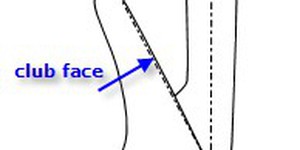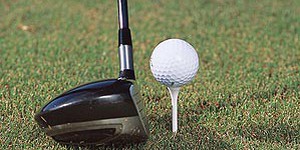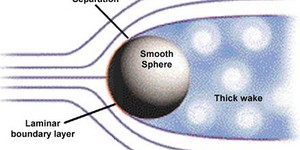Others Like “Golf Clubs, Loft Angle, and Distance: The Science of Hitting” (top 20 results)
|
If your idea of a great weekend morning is taking some practice swings at a driving range, or heading out to the links to play a round, this could be a good project for you. This project is designed to answer the question, what is the relationship between club loft angle and the distance that the ball travels when struck.
Read more
The goal of every golfer is to hit the golf ball as far as possible down the fairway. A key factor in determining the distance that the ball will travel is the velocity of the club when it strikes the ball. In this sports science fair project, you will determine exactly how distance is related to club velocity. Time to tee off!
Read more
There is a bewildering selection of different golf balls to choose from for playing the game. Some less expensive, some more expensive, all with different claims for the advantages they will bring to your game. This project can help you determine which type of golf ball is right for you.
Read more
If you're an avid golfer, this might be a fun project for you. When you're setting up to tee off out on the course, how much attention do you pay to putting the tee in the ground? The height of the tee can affect both where in the swing the club makes contact and where on the clubface the ball makes contact. Are you placing your tees at the right height to get the most distance from your swing?
Read more
Have you ever wondered why golf balls have a pattern of dimples on their surface? The dimples are important for determining how air flows around the ball when it is in flight. The dimple pattern, combined with the spin imparted to the ball when hit by the club, greatly influence the ball's flight path. For example, backspin generates lift, prolonging flight. When the ball is not hit squarely with the club, varying degrees of sidespin are imparted to the ball. A clockwise sidespin (viewed from…
Read more
Tennis racquets, baseball bats and golf clubs all vibrate when they hit the ball. You can often feel it in your hands, particularly if you "mis-hit" the ball. You can find the point(s) on your racquet, bat or club—called the "sweet spot"—that minimize unwanted vibrations. Low-tech method: hang the racquet or bat straight up and down with a string from its handle. Lightly hold the handle with your thumb and forefinger and have a helper sharply tap the bat, strings or club face…
Read more
For this project, you'll use a baseball as a pendulum weight, studying the motion of the ball with and without spin. Wrap a rubber band around the ball, and tie a string to the rubber band. Fasten the string so that the ball hangs down and can swing freely. Mark a regular grid on cardboard, and place it directly beneath the ball to measure the motion. You can also time the oscillations with a stopwatch. Lift the ball along one of the grid axes, and let it go. Observe the motion and record…
Read more
When the punter is trying to hit the "coffin corner" (within the opposing team's 10-yard line), out of bounds, what is the best angle to kick the ball for correct distance and maximum "hang time?" (For more information on the physics involved, see: Gay, 2004, Chapters 4 and 5.)
Read more
Block off one-third of a soccer net with a cone, 5-gallon bucket or some other suitable object. Shoot into the smaller side from a set distance, but systematically varying the angle to the goal line. Take enough shots at each angle to get a reliable sample. How does success vary with angle? For a basic project: How do you think your success rate will vary with angle? Draw a conclusion from your experimental results. A bar graph showing success rate at different angles can help to…
Read more
How high can you throw different types of balls, like a golf ball, a basketball, and a football? Would one of them go higher than the others? Do factors like mass, shape, and volume influence the final height? You can measure the approximate maximum height a thrown ball reaches by measuring the time it spends in the air.
To do this project, you'll need at least one ball and a helper with a stopwatch. Your helper should start timing just as you release the ball, and stop right when the ball…
Read more
|
Explore Our Science Videos
How Antibiotic Resistant Bacteria Take Over – STEM activity
Build a Mobile Sculpture – STEM activity
Popsicle Stick Catapult









